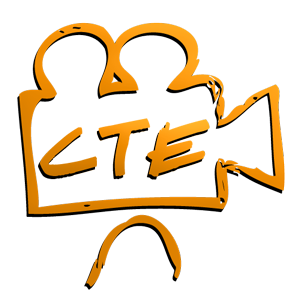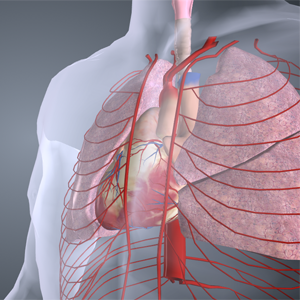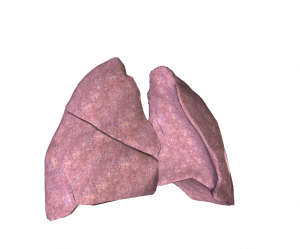An Introduction to the Respiratory System
Categories: CTE, New Videos Added to CTE Skills Library
An Introduction to the Respiratory System.
The Respiratory System plays a major part in our survival and works hand in hand with the Circulatory System.
Respiration for the body can not happen without the circulation of the blood driven by the cardiovascular system. Simply said, it is through the respiratory structures that Oxygen (a gas) is directed to the lungs and passed into the blood transportation system which then delivers the Oxygen to the body. But this is just half the trip. This just shows how important lungs are and any problems with them can cause medical issues that may be hard to reverse. For example, to update this article, the current COVID-19 pandemic is affecting people in many ways, with one being their lungs. Monitoring of this virus is extremely important, however, hospitals are becoming very full and are struggling to cope with the influx of patients, there is a way this can be helped – using a portable ultrasound system. These types of medical equipment from companies such as Butterfly Network can help immensely with the observation of people’s lungs, but from a safe distance, helping patients keep up to date with any care they may need, and to see if there are any escalations.
In this short video about the Respiratory System, we will discuss how a breath of fresh air is taken in through the respiratory pathway by the following structures… the nose, pharynx, larynx, trachea, bronchi tubes, and the lungs including the alveoli. All of this will be explained in this easy to understand detailed animation of the Respiratory System.
The Respiratory System plays a major part in our survival and works with the Circulatory System…
The circulatory system’s pulmonary circulation is what the respiratory system is all about. While the human organism is in utero development, the lungs are not actively functioning.
The circulatory system bypasses the lungs via the umbilical cord. Once the infant is BORN the lungs expand and the circulatory system reverses the blood flow to now enter the lungs carrying life supporting oxygen to the infant.
Respiration for the body can not happen without the circulation of the blood driven by the cardiovascular system. Simply put, it is through the respiratory structures that Oxygen (a gas) is directed to the lungs and passed into the blood transportation system which then delivers the Oxygen to the body…. this is half the trip.
Ventilation
The circuit is complete when Carbon Dioxide (a gas) is brought back from the body to the pulmonary structures in order to EXPEL Carbon Dioxide via the respiratory structures as a metabolic waste.
This cycle is known as Ventilation, which is the process of breathing in, and out. It is the movement of air between the environment and the lungs.
The Ventilation cycle is comprised of two phases. The complete cycle of the two phases is counted as one Respiration…. the average Respiration rate for an adult is 12 to 20 respirations per minute.
Phase I
Inspiration (inhalation) This is the process of breathing in air. Air is a mixture of gases:78.09% nitrogen, 20.95% oxygen, 0.93%argon, 0.039% carbon dioxide, and small amounts of other gases. The gas of choice for the human organism to survive is Oxygen.
Phase II
Expiration (exhalation) This is the process of breathing OUT air.. In general, the composition of exhaled air is approximately 78 percent nitrogen,18 percent oxygen and 4 percent carbon dioxide.
Respiration
Respiration takes place in the following two stages: External respiration .and internal..respiration.
- External respiration is the exchange or diffusion of O2 and CO2 between the lungs (the alveoli) and the blood stream (the erythrocytes or (red blood cells)
- Internal respiration is the exchange or diffusion of O2 and CO2 between the the bloodstream (the erythrocytes or red blood cells) and the body cells. One of the erythrocyte’s main functions is to carry the oxygen rich protein molecule called the “hemoglobin” and deliver it to the body (soma) cell.
Color of Blood
Oxygen rich blood is bright red. This blood is found in the arteries. As one red blood cell diffuses O2 into the body (soma) cell, the body (soma) cell diffuses CO2 into the same red blood cell. The CO2 rich blood is dark red with a bluish tint. This blood is found in the veins.
Structures and Functions of the Respiratory System
Here’s some of the main structures and functions of the Respiratory system.
- Nose- warms and filters the air
- Pharynx (throat) is divided into 3 components
- nasopharynx
- pharyngeal
- oropharynx
- Larynx which is the Voice box ; within the voice box is the glottis, which is the opening through which air passes in and out. The ability to produce sound or speech occurs when the air passes OUT through the voice box. Which is why you shouldn’t talk with your mouth full. You might just choke; and here’s why. While swallowing, the epiglottis, a leaf like structure of cartilage, must cover the larynx so that the food is directed to go down the esophagus and not down the windpipe (trachea), which keeps us from choking.
- Trachea which is the Windpipe, is often mistaken as the throat. It is located in the anterior area of the neck ; this structure is a 4-6 in. hollow tube held up by C- cartilages, resembling a corrugated pipe.
- Bronchi…these structures split off from the trachea. Each tube leading to the right and left lung where they further divide into smaller tubes or structures called Bronchioles. The bronchioles lead to the…
- Alveoli…located in the lungs. The alveoli are the most important structures in the Respiratory system. These round structures are often described as resembling a bunch of grapes. Here is where diffusion between the blood and the alveoli takes place. The body is supplied with life sustaining O2 and purges the excess CO2.
- THE DIAPHRAGM… is a dome shaped muscle that contracts and relaxes with every inhalation and exhalation. During inspiration the diaphragm contracts creating a vacuum in the thoracic cavity causing air to rush in through the nostrils and fill the lungs with O2.
Respiratory System trivia question:
How many lobes does each lung have and why?
This and many more questions about the function of the Respiratory System works are answered in the complete series of Anatomy and Physiology, The Twelve Body Systems.
RECAP:
A breath of air is taken in through Inspiration and moved through the respiratory pathway by the following structures:
- Nose
- Pharynx (throat)
- Larynx
- Trachea
- Bronchi Tubes
- Lungs
- Alveoli
– The exchange of gases between the Alveoli (lungs) and the bloodstream is called external respiration.
– The exchange of gases between the blood stream and the body (soma) cells is called internal respiration.
Oxygen is needed by all body cells and Carbon dioxide is the metabolic waste which is removed from the body through Exhalation.
The body only has a 4-6 minute supply of oxygen which is why breathing is essentially an involuntary system. It must continuously work if the human organism is to stay alive. You can voluntarily hold your breath, but for how long?
Respiratory System



